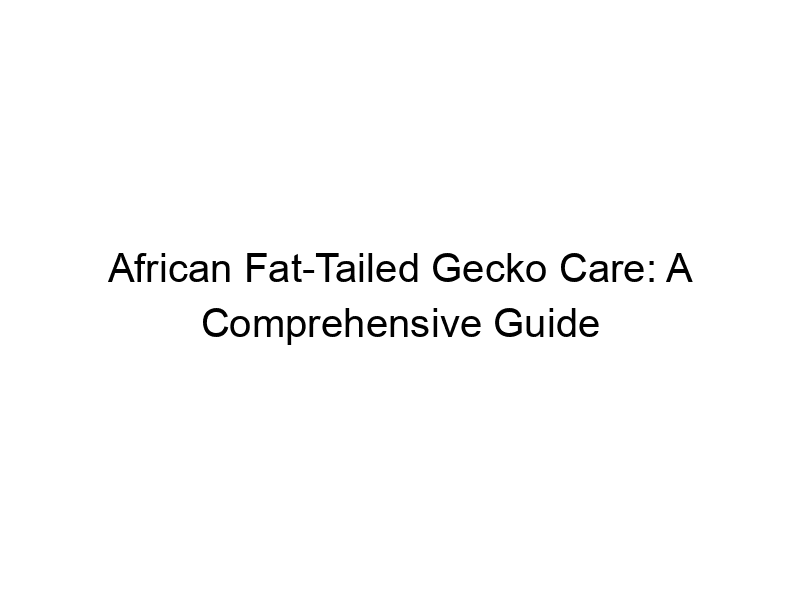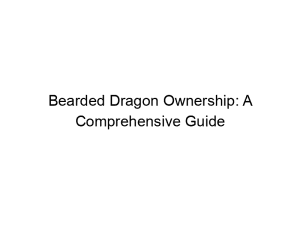Unlocking the Secrets of the African Fat-Tailed Gecko: A Complete Care Guide
Are you fascinated by reptiles and considering adding a unique creature to your home? The African Fat-Tailed Gecko is a captivating choice, known for its docile nature and distinctive appearance. This comprehensive guide will delve into the unique behaviors and needs of this remarkable reptile, covering everything from habitat setup to dietary requirements. Whether you’re a seasoned reptile keeper or a curious beginner, you’ll find valuable information here to ensure the well-being of your African Fat-Tailed Gecko. We’ll explore their fascinating characteristics, essential care tips, potential health issues, and frequently asked questions to provide a complete understanding of these amazing lizards.
The African Fat-Tailed Gecko (Hemitheconyx caudicinctus) is a small, nocturnal gecko native to the arid and semi-arid regions of West Africa.
They are renowned for their docile temperament, making them excellent pets for beginners. Their name derives from their remarkably thick tail, which serves as a crucial energy storage reservoir.
Physical Characteristics
Size and Appearance
Adult African Fat-Tailed Geckos typically reach a length of 6 to 8 inches, with females generally smaller than males. They boast a range of colors and patterns, including browns, grays, and tans, often with mottled or striped markings. Their skin is granular and slightly rough to the touch.
Habitat and Enclosure Setup
Creating the Perfect Terrarium
A properly set up terrarium is crucial for your gecko’s health and well-being. A 10-gallon tank is sufficient for a single adult, while larger enclosures are recommended for pairs or breeding groups. Use a substrate such as paper towels, reptile carpet, or tile for easy cleaning and hygiene.
Temperature and Humidity
Maintain a temperature gradient within the terrarium, with one warm side (around 85-90°F) and a cooler side (around 75-80°F). A heat mat placed under one side of the tank is an effective method for achieving this gradient. Humidity levels should be moderately low, around 30-40%, which can be achieved through proper ventilation.
Lighting and Enrichment
Lighting Requirements
African Fat-Tailed Geckos are nocturnal, so they don’t require UV lighting. However, a low-wattage nightlight can be beneficial for observation and to avoid startling them during nighttime interactions. Avoid bright or intense lighting during the day.
Enrichment and Environmental Stimulation
Providing environmental enrichment is vital for the physical and mental stimulation of your gecko. Include climbing structures like branches, rocks, and cork bark. Hide boxes offer security and promote natural behavior.
Diet and Feeding
Dietary Needs
These geckos are insectivores, with crickets forming the staple of their diet. Supplement their diet with other insects such as mealworms, dubia roaches, and waxworms (occasionally). Dust insects with calcium and vitamin D3 powder to ensure proper nutrition.
Feeding Frequency
Adult geckos can be fed every other day or twice a week, while juveniles may require more frequent feeding. Adjust the quantity of food according to your gecko’s body condition and appetite.
Handling and Behavior
Docile Nature and Handling Tips
African Fat-Tailed Geckos are known for their docile temperament and generally tolerate gentle handling. However, it’s crucial to approach them slowly and calmly, allowing them to acclimate to your presence before attempting to pick them up.
Nocturnal Behavior and Activity Patterns
As nocturnal creatures, they are most active during the evening and night. Their activity patterns are influenced by temperature and humidity. Observe their natural rhythms and avoid disturbing them excessively during daytime hours.
Health and Common Diseases
Signs of Illness
Monitor your gecko for any signs of illness, such as lethargy, loss of appetite, weight loss, skin abnormalities, or changes in their droppings. Consult a veterinarian specializing in reptiles for prompt diagnosis and treatment.
Preventing Health Issues
Maintaining a clean and properly regulated environment is key to preventing health problems. Regularly clean the terrarium, provide appropriate nutrition, and avoid exposing your gecko to extreme temperatures or humidity fluctuations.
Breeding and Reproduction
Breeding Considerations
Breeding African Fat-Tailed Geckos requires careful planning and monitoring. It’s essential to ensure proper nutrition and environmental conditions to promote successful breeding. Experienced keepers should research this aspect thoroughly.
Reproductive Cycle and Egg Laying
Female geckos lay clutches of 1-2 eggs approximately every 3-4 weeks during the breeding season. Provide a suitable substrate for egg laying, such as moist vermiculite.
Choosing Your Gecko
Selecting a Healthy Gecko
When choosing an African Fat-Tailed Gecko, look for a vibrant individual with bright eyes, firm body condition, and no visible injuries or skin abnormalities. Avoid geckos that appear lethargic or emaciated.
Reputable Breeders and Sources
Purchase your gecko from a reputable breeder or a trusted reptile shop to ensure the gecko’s health and origin. Avoid acquiring wild-caught specimens to support ethical reptile keeping.
Comparing African Fat-Tailed Geckos to Other Species
Similarities and Differences with Other Geckos
Compare and contrast the African Fat-Tailed Gecko with other popular gecko species such as Leopard Geckos. Highlight similarities and differences in their care requirements, temperament, and physical characteristics.
Other Popular Gecko Species for Beginners
Suggest other gecko species that are suitable for beginner reptile keepers, such as Leopard Geckos and Crested Geckos, and highlight their relative ease of care.
Frequently Asked Questions
What is the lifespan of an African Fat-Tailed Gecko?
With proper care, African Fat-Tailed Geckos can live for 10-20 years, sometimes even longer.
Can African Fat-Tailed Geckos be housed together?
While possible, housing multiple geckos together requires a large enclosure and careful monitoring to avoid territorial disputes. It’s generally recommended to house one gecko per enclosure unless experienced with breeding.
What happens if my gecko’s tail falls off?
African Fat-Tailed Geckos can drop their tails as a defense mechanism. The tail will eventually regenerate, but it may not be as plump as the original. Ensure proper nutrition during regeneration.
How often should I clean the terrarium?
Spot clean the terrarium daily, removing any uneaten insects or fecal matter. A complete substrate change should be performed every few months, depending on the type of substrate used.
Are African Fat-Tailed Geckos good pets for children?
With proper supervision, they can be appropriate pets for older children who understand how to handle reptiles gently and responsibly.
What are the signs of dehydration in an African Fat-Tailed Gecko?
Signs of dehydration include sunken eyes, lethargy, and loss of skin elasticity. If you suspect dehydration, immediately provide access to fresh water and consult a vet.
Final Thoughts
The African Fat-Tailed Gecko, with its unique characteristics and relatively easy care requirements, makes a wonderful addition to any reptile enthusiast’s collection. By understanding their specific needs – from creating an appropriate habitat and providing a balanced diet to recognizing signs of illness and ensuring proper handling – you can ensure a long and healthy life for your gecko. Remember, providing a stimulating environment and attentive care is key to their well-being. Through careful observation and proactive measures, you can enjoy many years of companionship with this fascinating creature. Start researching reputable breeders near you today, and embark on the rewarding journey of caring for your very own African Fat-Tailed Gecko.




